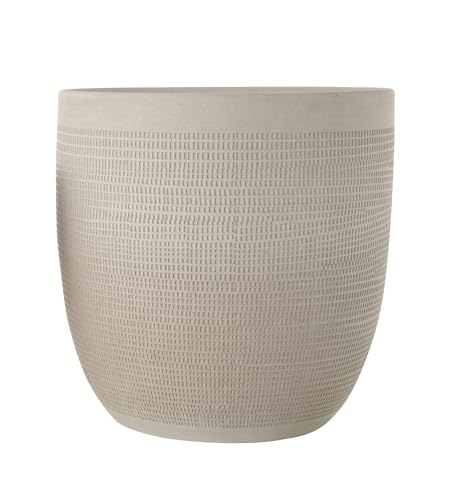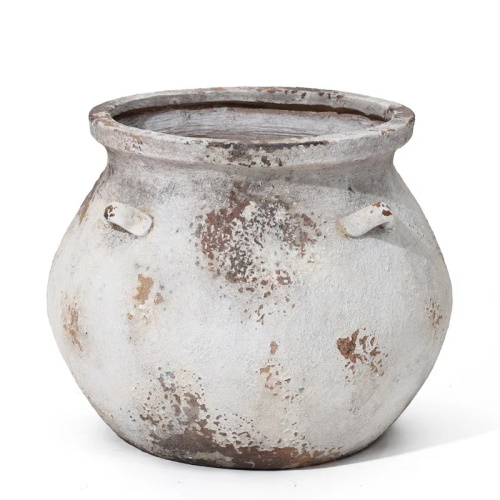10 of the best trees to plant close to a house – and which varieties to avoid
Planting a tree near your house offers many benefits, including a beautiful landscaping accent as well as shade and privacy
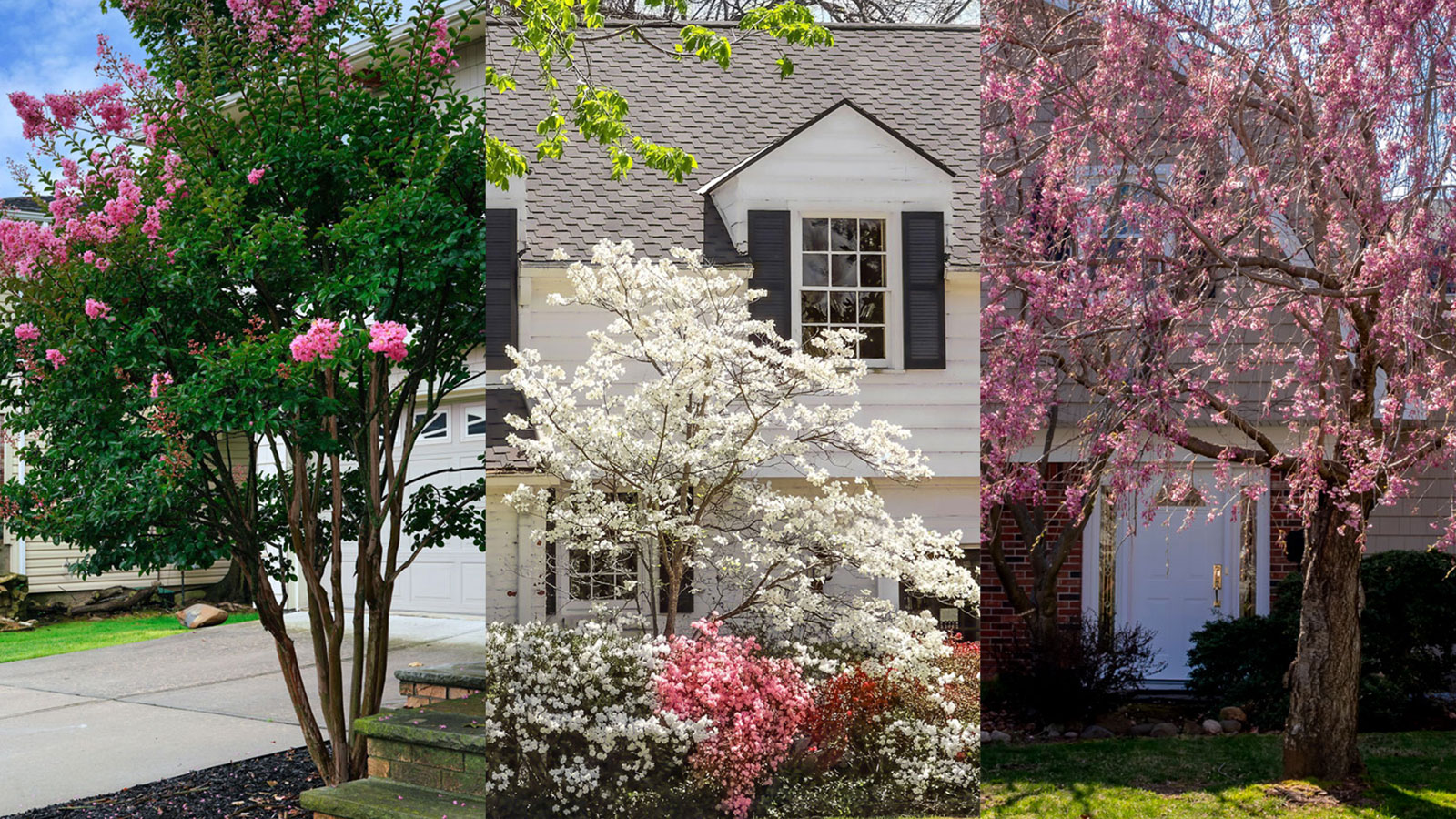

There are many benefits to planting trees near your house to landscape the area around your home and soften the look. Having a shapely ornamental tree in your front yard adds to the curb appeal of your home by making a lovely first impression, and can increase the value of your property too.
There are practical benefits too, as a strategically placed tree in a courtyard area or backyard patio space offers shade and a pleasant place to rest on hot sunny days. Likewise in winter, trees come into their own as they offer wind protection when you step out of your house to get some air during the cool season. The best trees for privacy and screening will also offer seclusion from neighbors, the road, and any other sights you might want to obscure or disguise. Trees can provide privacy around a patio or porch, as well as break up sight lines to your windows.
All these benefits will far be outweighed, however, by the headache of structural issues if you choose the wrong type of tree that becomes invasive or too big. So, let our expert choices guide you in the right direction.
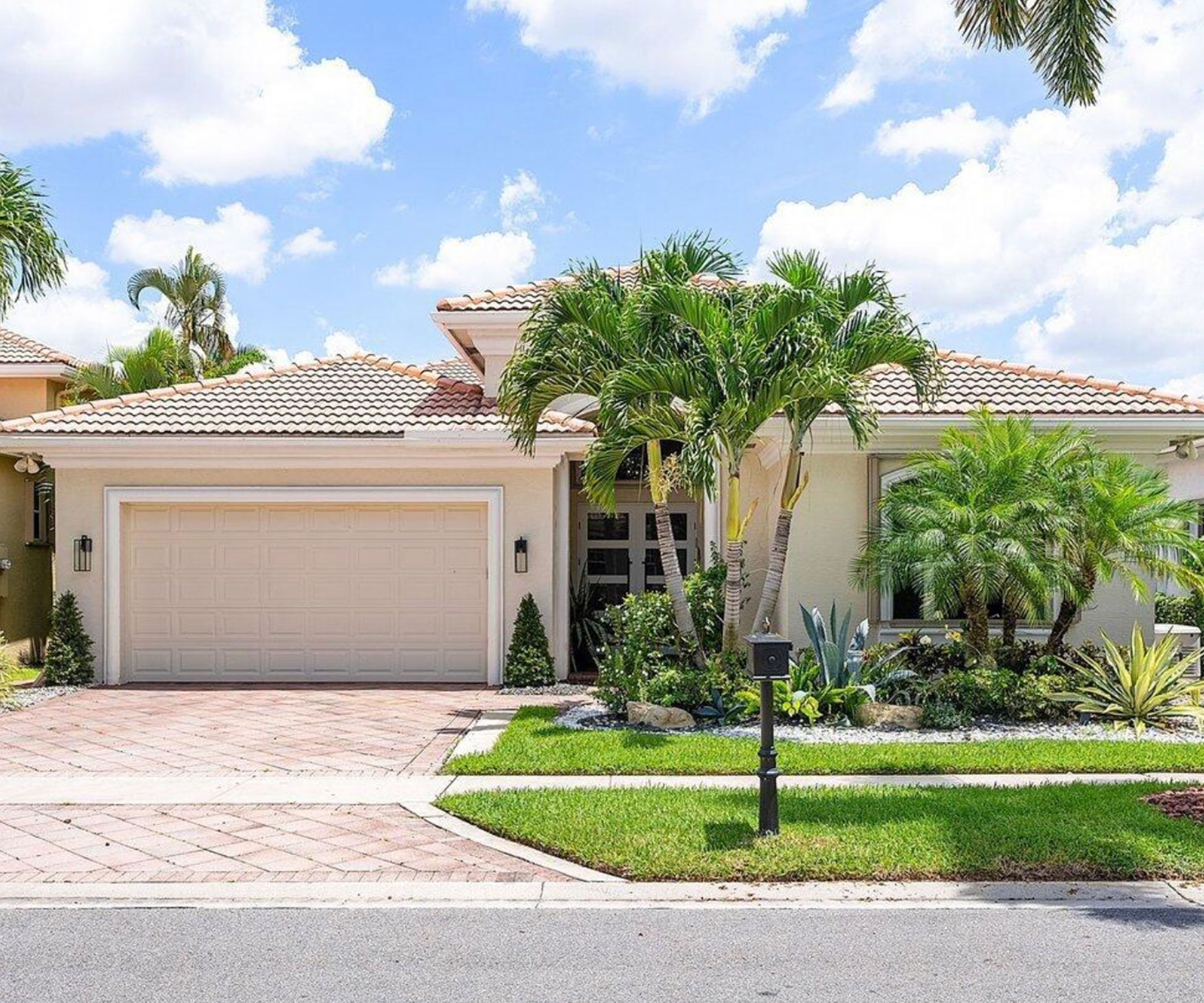
Choosing the best trees to plant close to a house
'Selecting a tree is one of my favorite things to do as part of my practice,' says New York-based landscape designer Jonathan Fargion. 'When looking for the best trees to plant close to a house it's important to choose one based on a few characteristics. From a size perspective, you need to keep in mind the mature height and spread, as well as the trajectory of each tree.'
Choose a variety of tree that's too big and it can block the light and the view, as well as becoming a structural threat in some cases. But if you take care to choose the right tree for the right place it will flourish without causing any damage to your property, boundaries, or any neighboring properties.
Deciding on the best trees to plant close to a house is a big decision, so first check out our expert suggestions for inspiration.
Plus don't forget you can always find out the best trees to grow in pots if you want to play it super safe or space is tight.

Jonathan grew up in Milan, where he got an MA in environmental architecture from Politecnico di Milano. His academic and professional experiences have taken him from Italy to Israel, and Hong Kong to Lisbon, ending up in New York. He has a specialization in ornamental horticulture from the New York Botanical Garden, and designs outdoor spaces, including urban, countryside, and coastal projects. He has spoken at NYU Casa Italiana, the New York Botanical Garden, and Montclair University to share his experience, and give talks on ecology and gardens.
1. Crepe myrtle
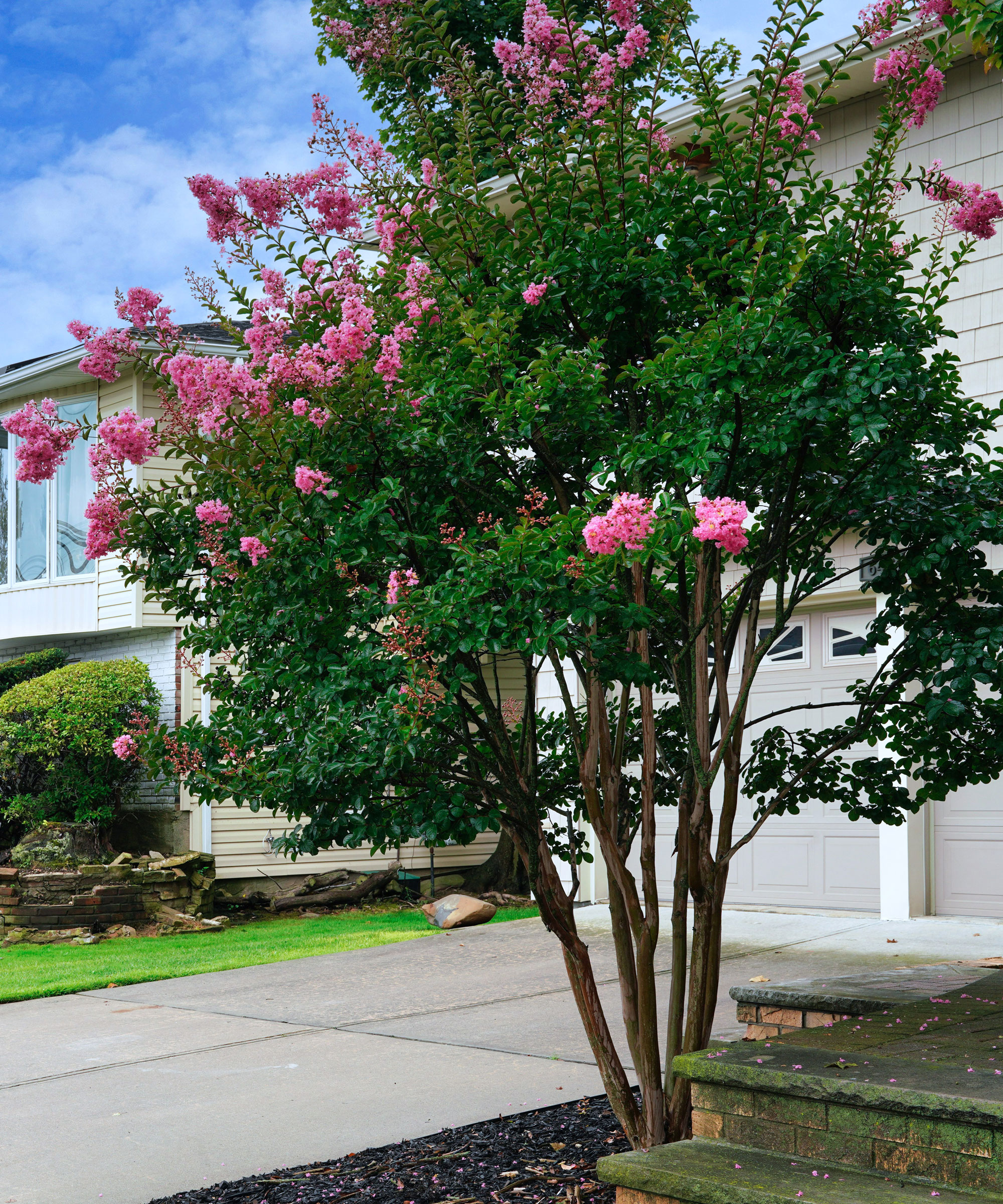
USDA zone: 7-10
Height: 3-50 feet
Botanical name: Lagerstroemia
Their showy panicles of flowers with crinkly petals in mainly pink or white, as well as lavender and red, from summer right through to fall make these trees a popular choice, especially as they are so easy to grow too.
Also known as crape myrtle and summer lilac, they are one of the best trees for small gardens as well as for growing in pots if you want to include them as a feature close to the house.
'Crepe myrtle is a multi-stem flowery tree with a beautiful multi-color bark,' says Jonathan Fargion. 'The inflorescence can be either white, magenta, or orange. They feature a beautiful fall color too.'
Crepe myrtles can be trained to grow into a single trunk tree form, or left to develop into a natural multi-stemmed style. Find out how to prune crepe myrtle to let your tree develop in the shape you want to suit the space near your house.
2. Ornamental cherry tree
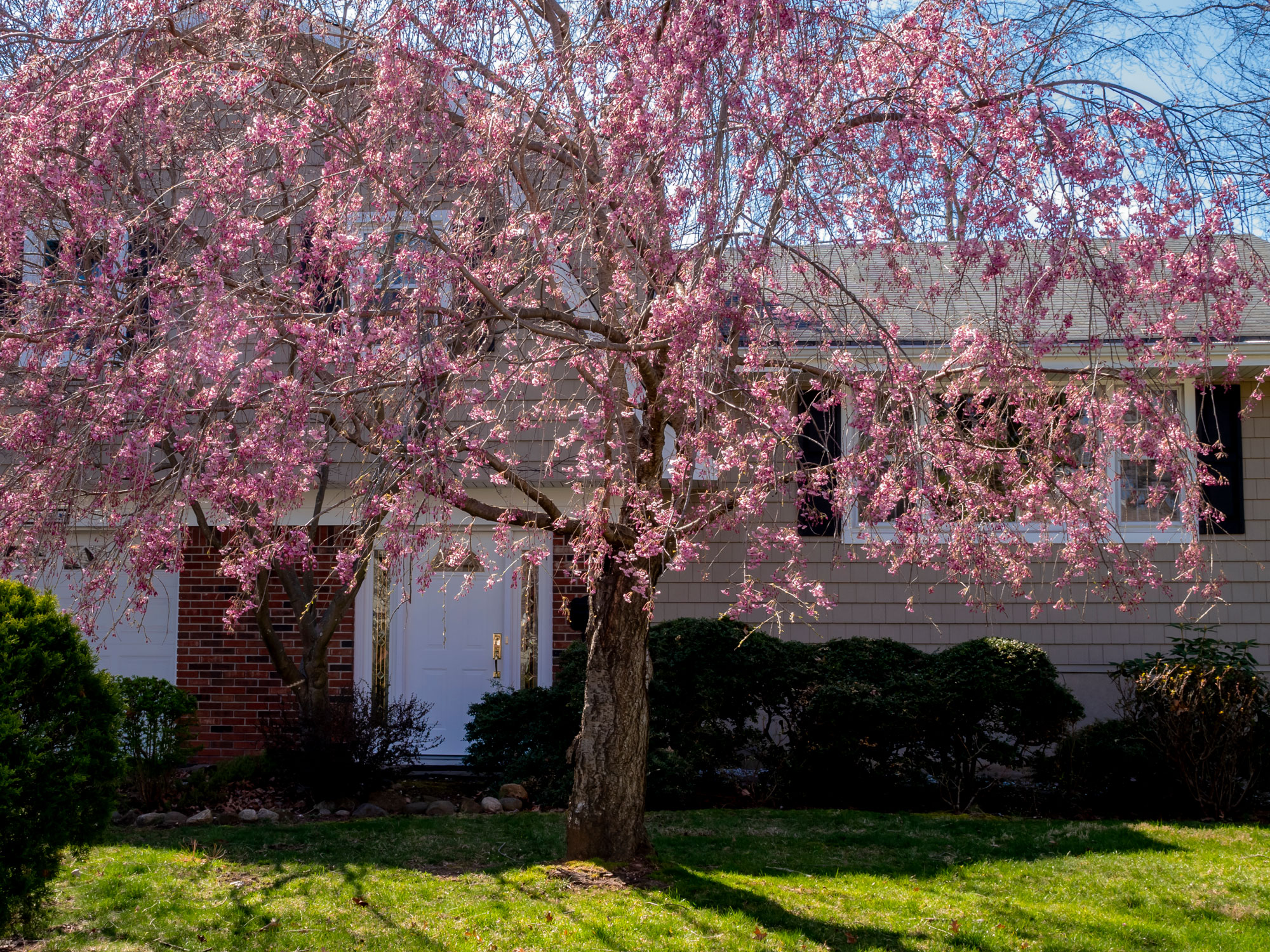
USDA zone: 5-8
Height: 6-50 feet
Botanical name: Prunus
Every yard should make space for at least one of these small flowering cherry trees. With clusters of gorgeous pink or white petals, pretty foliage that turns fiery red, orange and gold in fall, and attractive bark in winter, they create a great focal point that will perfectly enhance the aesthetic of your exterior at any time of year.
'Available in various cultivars and colors, cherry trees boast not only spectacular blooms but also shallow roots, ensuring they won't encroach upon or disrupt your property,' says certified gardening expert and botanist Melvin Cubian from Plantin. 'Plus, as an added bonus, if you choose the cultivated variety you can enjoy a handful of fruit in summer.'
In other good news, these are a low-maintenance tree choice too. Pruning a cherry tree is not always necessary as the trees tend to develop their own natural form without help. Just be sure to plant it at a suitable distance from the house so you don't cramp its growing style.

Melvin is a certified gardening and plant care expert at PlantIn, which provides a personalized experience for anyone interested in planting and gardening. He is also currently studying for his masters degree in Plant Health.
3. Leopard tree
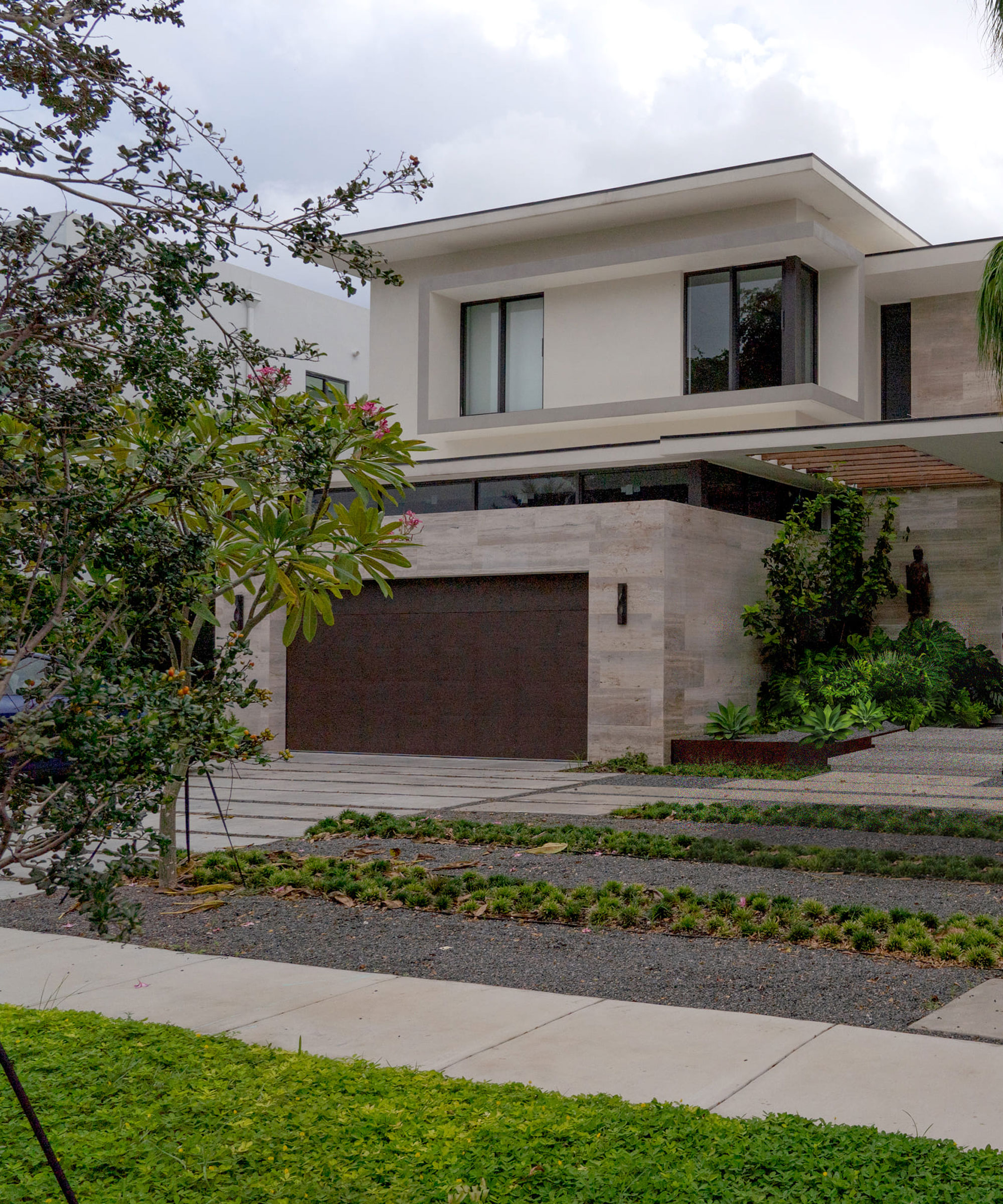
A leopard tree (on the left) blends seamlessly with other natural elements in this front yard design
USDA zone: 10-12
Height: 12-50 feet
Botanical name: Libidibia ferrea (formerly known as Caesalpinia ferrea)
This slender deciduous tree provides light summer shade and is an ideal choice for tropical garden ideas. If you're looking for an exotic tree plant one or more in your garden, or even in large pots in your courtyard. It has clusters of small, yellow pea-like fragrant flowers in summer that are followed by dark seed pods.
'Named for its very hard wood, Brazilian ironwood [another name for it] has a lacy, umbrella-shaped crown with slightly drooping branches,' says horticulturalist Richard A Criley of the Department of Tropical Plant and Soil Sciences, at the University of Hawaii at Manca. 'It does not cast heavy shade, as its leaves are rather feathery and delicate. The trunk is smooth with whitish, gray, and dark patches that peel off as the bark ages, giving rise to the other common name of leopard tree.'
Needing tropical to warm temperate climates to grow and thrive, this is a great choice if you live in Florida or Hawaii. It's a good option for front yards as it's tolerant of city street conditions such as shading from buildings. In moderate climates that experience light frost or dry summers, the leopard tree will not grow into a giant as these conditions will control its growth naturally.
4. Allegheny serviceberry
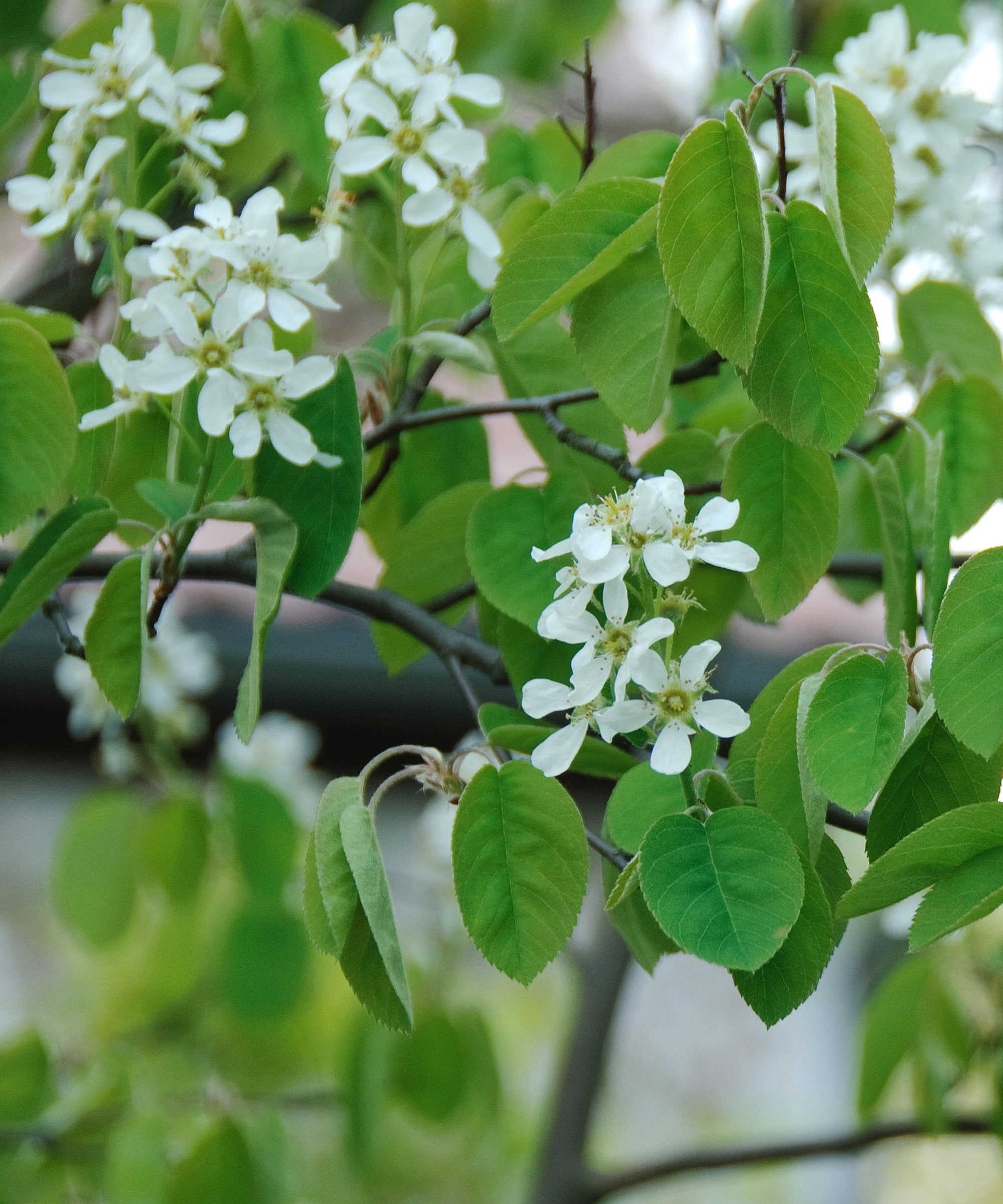
Amelanchier laevis 'Ballerina'
USDA zone: 4-9
Height: 15-25 feet
Botanical name: Amelanchier laevis
Native to the northeastern US, where it is found mainly in the Appalachian mountains, this is an excellent choice if you're looking for a medium- to fast-growing low-maintenance specimen tree. The showy white flowers are followed by pretty purple berries in June.
'Trees that keep a medium size when they are mature typically have a multi-stem structure, making them an interesting choice even during winter time when defoliated,' says Jonathan Fargion. 'Amelanchier laevis is a multi-stem flowery tree, with an early spring white bloom, and beautiful fall color.'
The serviceberry naturally forms a well-branched shape that requires little or no pruning. It's one of the best trees for front yards, and its easy going nature is the reason why it's so popular in landscaping design.
5. Mexican fan palm
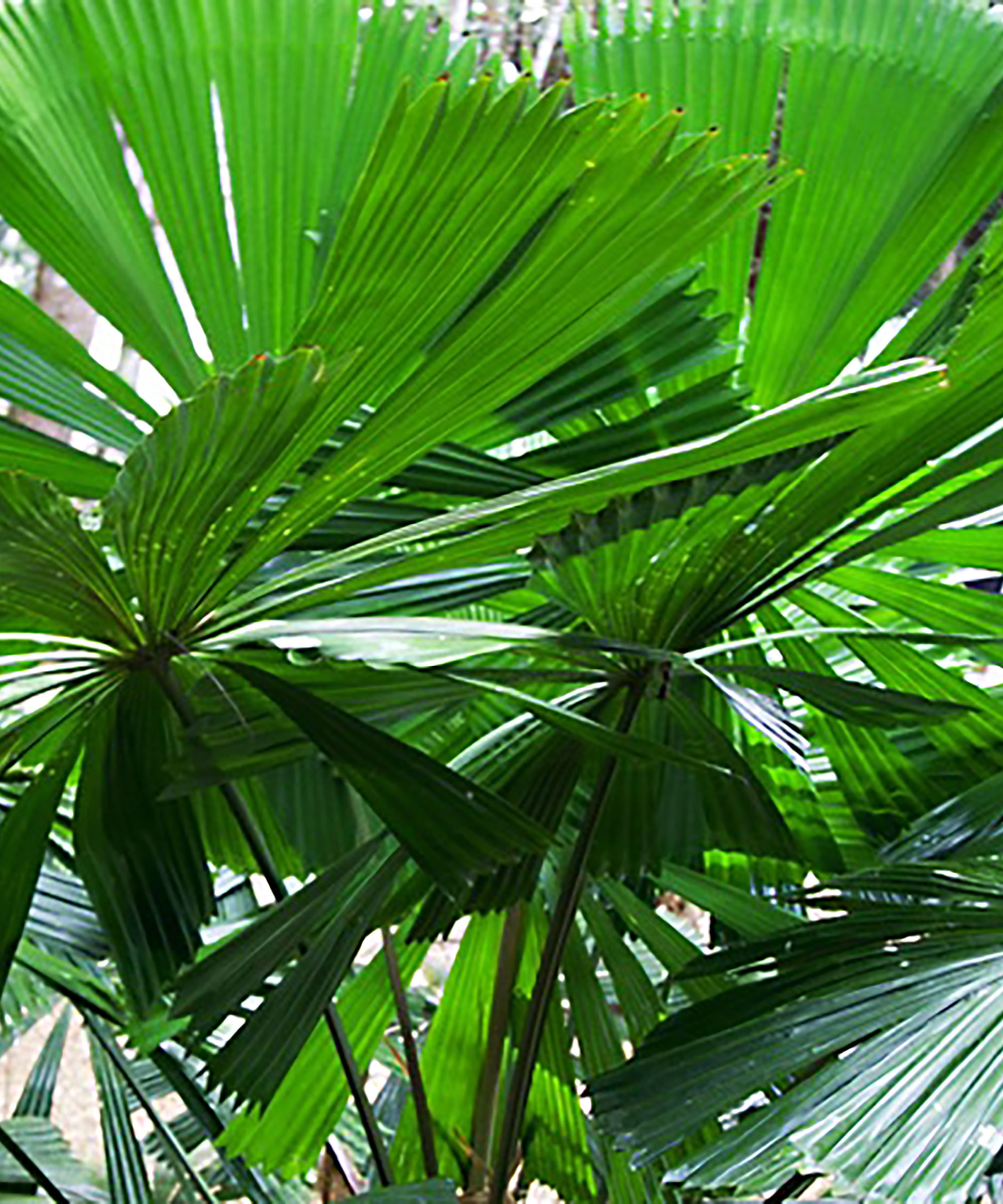
USDA zone: 9-11
Height: up to 50 feet
Botanical name: Washingtonia robusta
With its elegant slender trunk and lush green fan-shaped foliage, the Mexican fan palm is a great choice if you're interested in finding out how to grow a palm tree to add drama and architectural form to your yard. It even has clusters of pretty cream-colored flowers to add to the mix in summer.
Most palm trees originate from tropical climates so this is a great choice if you live in a desert region. Used to warm summers and mild winters, the Mexican fan palm is happy in growing zones where temperatures range from 95°F to 78°F.
'This tall, elegant palm is a wise choice for those seeking water-efficient landscaping combined with aesthetic appeal,' says Melvin Cubian. 'It does not damage your house foundation and is ideal for accentuating a focal point such as alongside a pathway leading to your home.'
Despite their height when mature, young Mexican fan palms grow very well in containers. So this is a great way to grow them if you're looking for tree ideas for a small yard, especially as this palm is considered invasive in Florida, California, and Hawaii.
6. Sweetbay magnolia
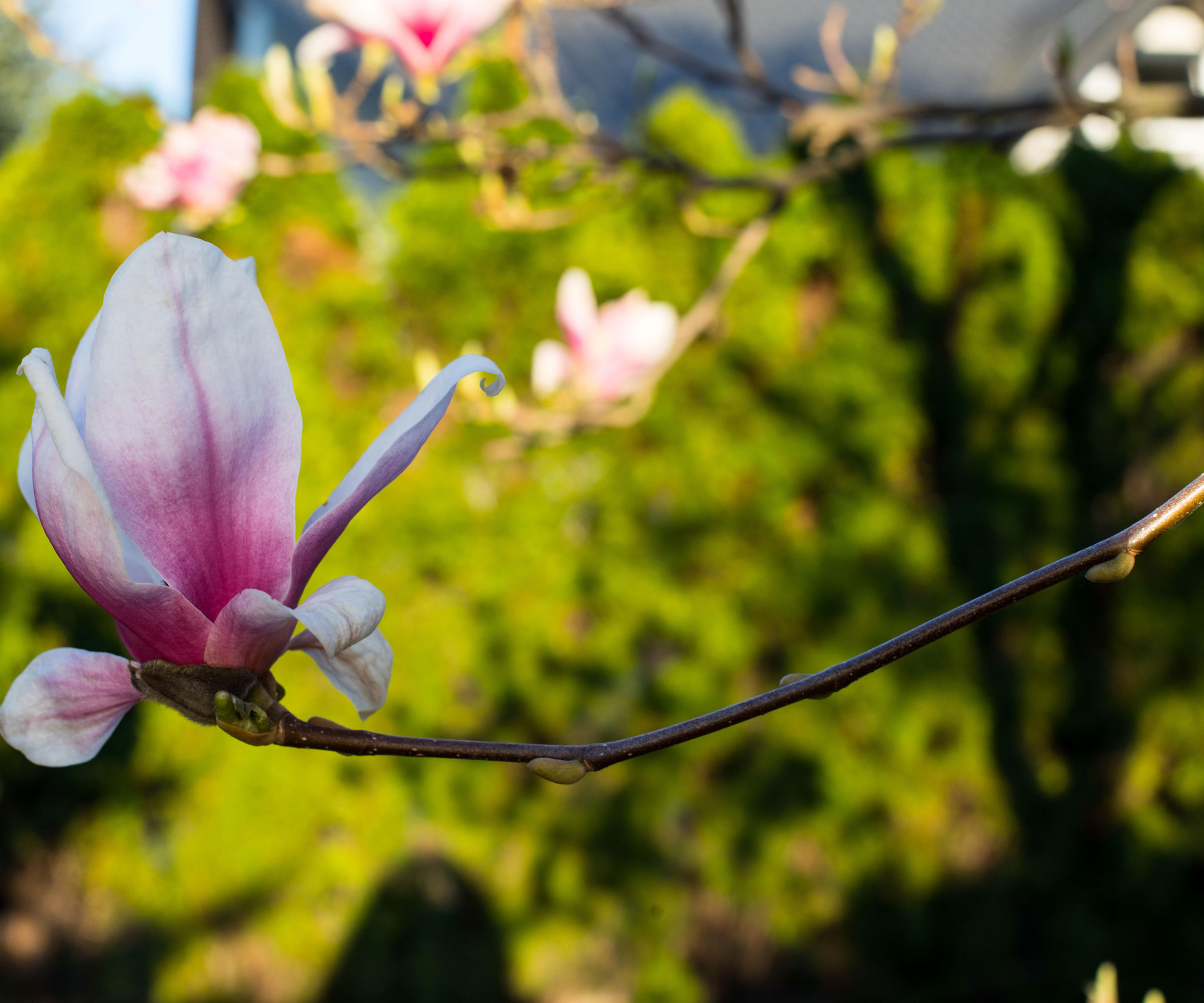
USDA growing zone: 5-9
Height: 15-25 feet
Botanical name: Magnolia virginiana
When it comes to choosing a pretty flowering tree to grow in your yard the sweetbay magnolia is right up there. It's one of the top picks on our list of the best types of magnolia to add to your landscaping ideas.
'Sweetbay magnolia is a multi-stem tree with semi-evergreen leaves that feature a silvery underside,' says Jonathan Fargion. 'Its inflorescence is creamy white and exudes a sweet lemon zest fragrance.'
The leaves form a lovely shimmering canopy. This is a deciduous variety but if your winters are mild it will retain its leaves. This is why it's often referred to as a semi-evergreen. Unlike other magnolias this variety likes wet, clay soils, and for this reason is also known as 'swamp magnolia'.
This type of magnolia is more tolerant of cold and will retain some of its semi-evergreen foliage more successfully in northern climates. It's a good option if you're looking for ideas on the best fast-growing trees to create a focal point in your yard.
7. Eastern redbud

USDA zone: 5-9
Height: 20-25 feet
Botanical name: Cercis canadensis
This small deciduous tree is grown primarily for its show of flowers with pretty rose pink petals in late winter and early spring. It can be grown in either a multi-stemmed shape with a rounded crown or alternatively with a short main trunk.
Redbud trees grow to around 25 feet, making them a great understory tree to use around houses. 'For a touch of drama without worrying about property damage, the Eastern redbud is a great addition to your house landscape,' says Melvin Cubian. 'This medium-sized tree stands out with its golden hues in fall and vibrant magenta tones in spring.'
It's one of the best trees for wildlife too. The blooms feed bees and hummingbirds, while other wildlife join in to enjoy the seeds later in the year.
8. Amur maple
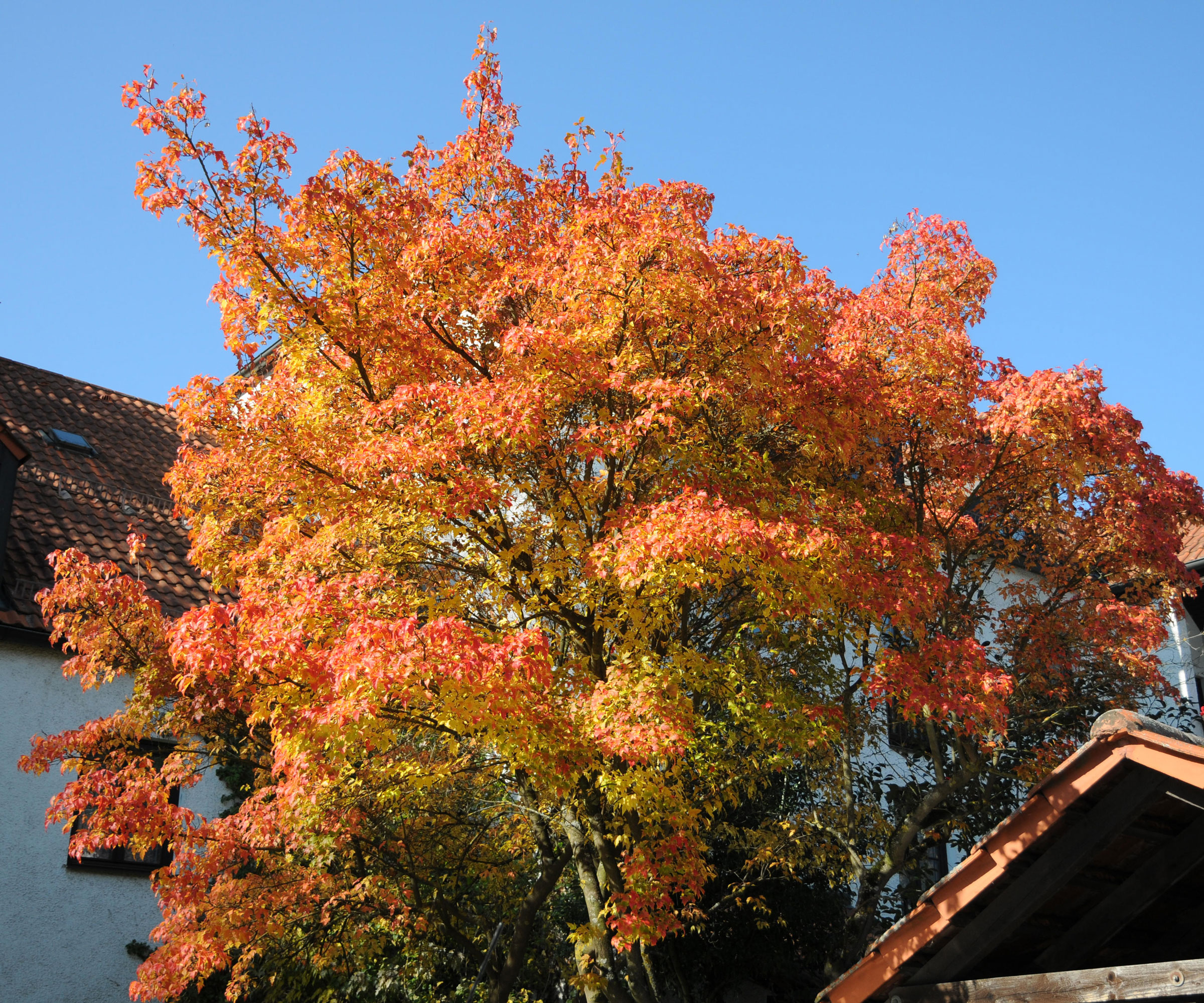
USDA zone: 3-8
Height: 15-20 feet
Botanical name: Acer ginnala
Also known as Acer ginnala, this is one of the less well-known varieties of Japanese maples, but nevertheless you certainly won't regret planting one of these trees in your yard, especially in fall when it spices things up as the foliage turns stunning shades of scarlet.
'Acer ginnala is a multi-stem tree known for its beautifully shaped leaves, which provide soft dappled shade in summer, then when fall comes offer a showy display of burgundy-red color,' says Jonathan Fargion.
It will look spectacular planted at the front of your home, and can also be planted in a container to add to the porch area. One of the great things about this small deciduous maple is that you can grow it as a small tree or even a shrub, and it doesn't need a lot of room.
9. Flowering dogwood
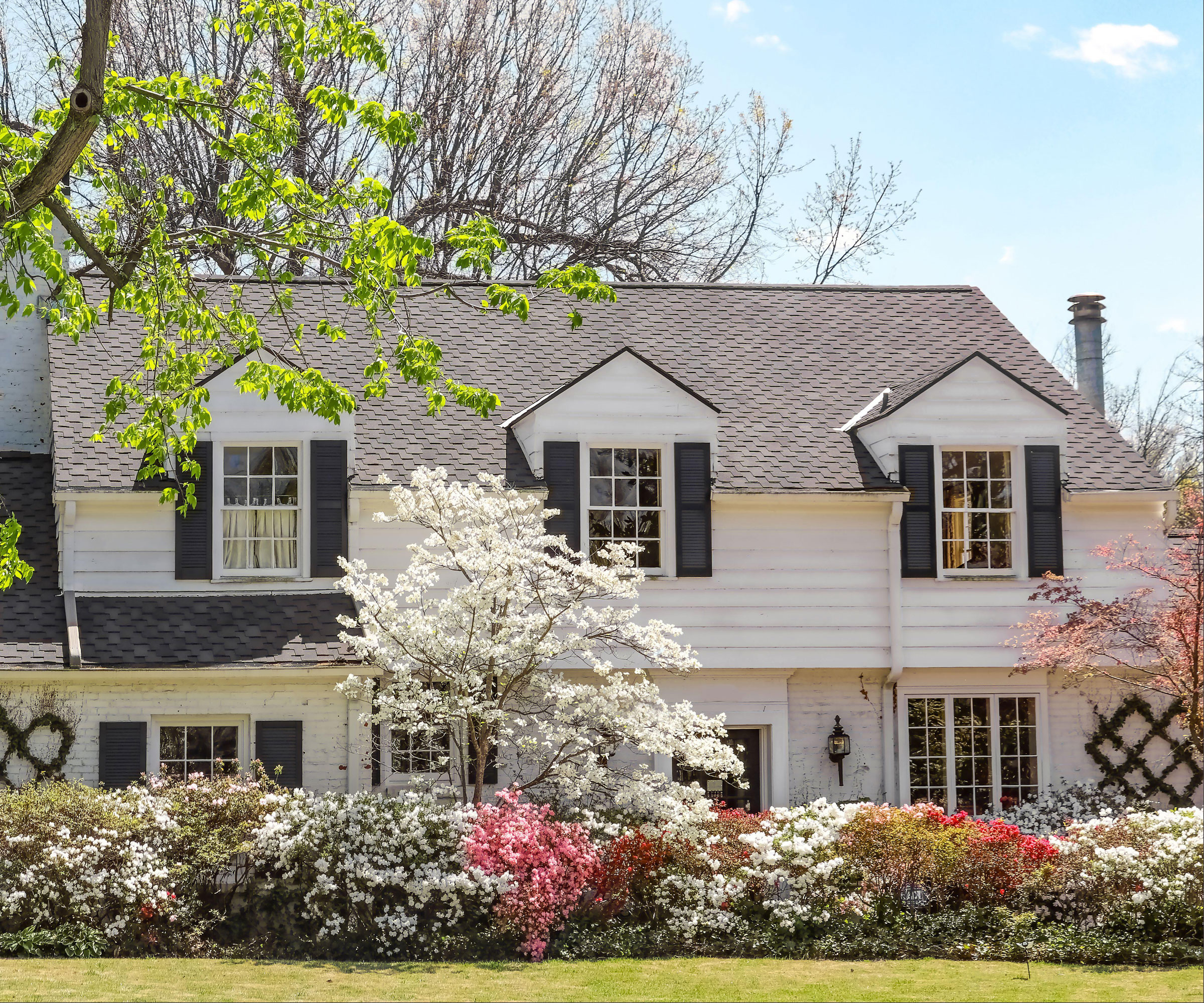
USDA zone: 5-9
Height: up to 30 feet
Botanical name: Cornus florida
Now for one of my own personal favorites. The highly ornamental variety of dogwood known as Cornus florida is native to northeastern USA and is definitely one of best trees to plant close to a house. It will give your property curb appeal by adding an elegant touch to your landscaping with its graceful, structural beauty.
Flowering dogwood has a naturally attractive silhouette that doesn't need pruning, and provides plenty of interest with white or pink blooms in spring, and red, orange, yellow and purple foliage in fall.
Try early blooming 'Cherokee Brave', available from Nature Hills, which has dark rose-red bracts and reliably flowers earlier in the spring than many other dogwoods. They also leaf out earlier, quickly shaking off the gray days of winter.
'Cherokee Brave' is super cold-hardy too, thriving up to USDA hardiness zone 9 down to zone 5, and will stand up to weather conditions that makes many other dogwoods shrivel.
Apple
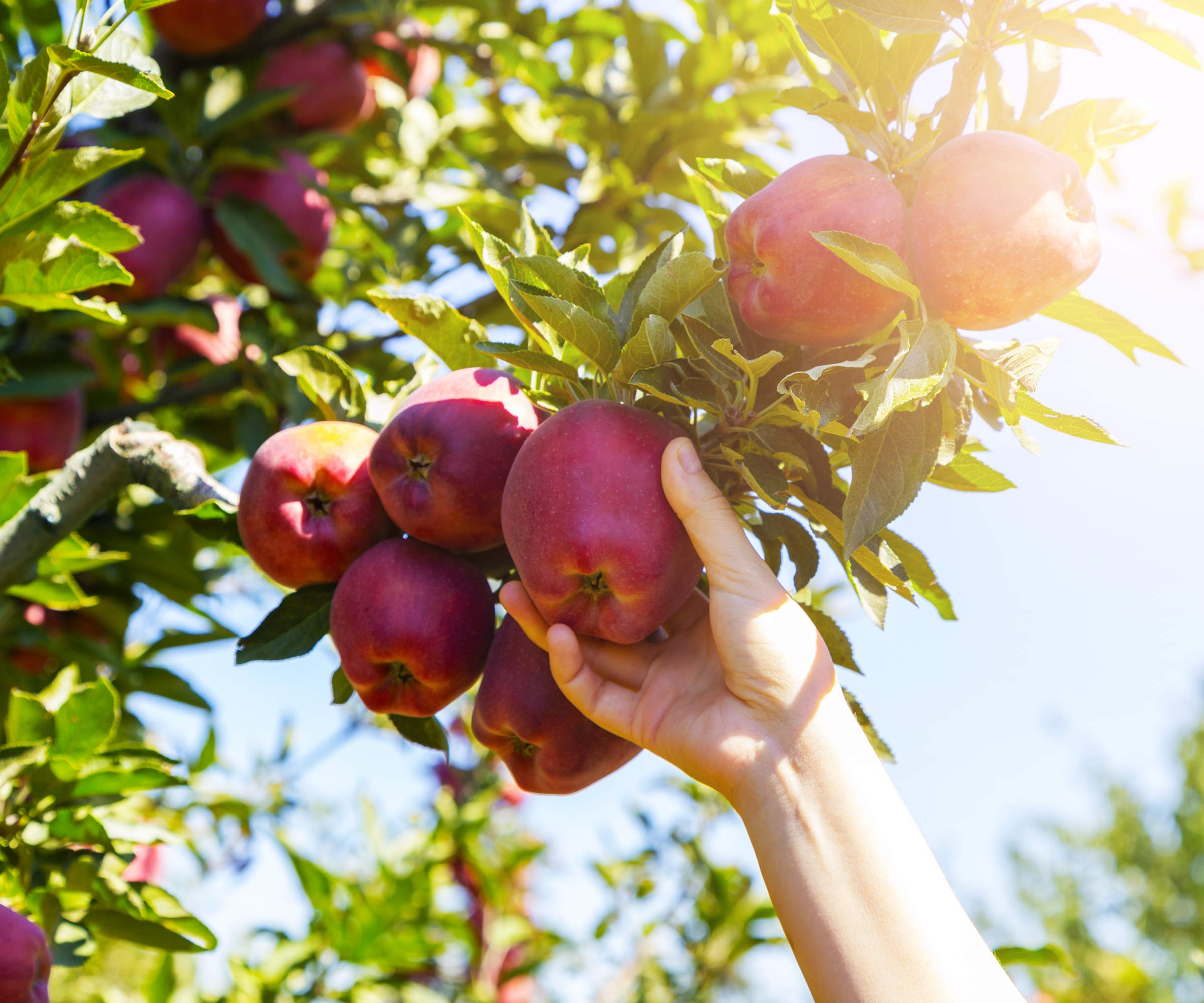
USDA zone: 3-9
Height: up to 25 feet
Botanical name: Malus domestica
Having a fruit tree close to your house has many benefits, not least the wonderful curb appeal of blossom in the spring, and lush fruits in the fall.
Provided you keep on top of the pruning to maintain a neat and tidy shape, growing an apple tree in your front yard is not difficult. You can also find dwarf cultivars, which are ideal fruit trees for small gardens, and might better suit a position close to a house. Another option is to grow an apple tree in a pot, for a more compact look.
The only downside? Windfalls may need collecting up more often to keep your yard from becoming messy or attracting unwanted pests, but I think the balance is worth it.
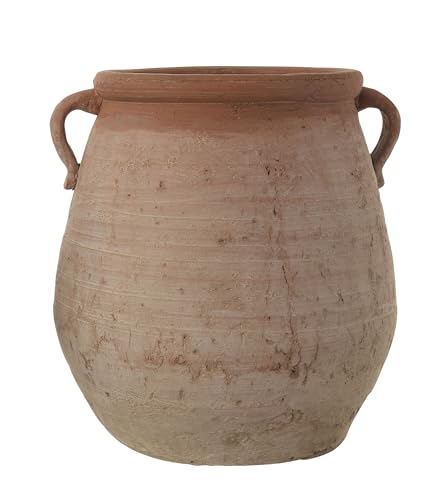
This urn is unbeatable for rustic charm and understated elegance. It would suit a variety of trees, from a Mediterranean olive to many kinds of fruit trees.
FAQs
What trees should you avoid planting close to a house?
'Varieties of tree that I would avoid planting near your home are large evergreens. They put your home in perennial shade since they don't lose their leaves or needles,' says says New York-based landscape designer Jonathan Fargion. 'These include Japanese cedar, Douglas fir, white pine, Norway spruce, leyland cypress, and blue spruce.'
Jonathan also suggests avoiding large deciduous trees such as dawn redwood, oaks, sycamore, tuliptree, Kentucky coffee tree, elms, beeches, and willows.
Meanwhile gardening expert and botanist Melvin Cubian from Plantin, suggests avoiding the mimosa tree too. 'While it may initially appear as a visually striking option, it's crucial to be aware of its invasive nature and potential damage to the ecosystem in many parts of the US.
He is also not keen on poplars. 'The aggressive root system of poplars sometimes compromises the structural integrity of foundations nearby. This species is also notorious for its high water consumption and allergen release, which may pose a problem for some people.'
Finally, Melvin suggests steering clear of the chinaberry tree. 'This tall tree can damage pathways and cause cracks in nearby walls.'
How far should a tree be planted from my house?
A good rule of thumb for how far a tree should be planted from your house is to start at about 8 to 10 feet away from the house for small trees, and scale up accordingly in terms of the mature height and spread of the variety of tree you decide on.
Small to medium trees with non-invasive root systems are best to plant close to your house to avoid any potential damage to the foundations. Find out how to plant a tree for a more detailed step by step guide.
If you're inspired by our round-up of the best trees to plant close to a house check out landscaping around trees ideas too, especially if you're looking for stunning underplanting styles to best show off your tree plus of course add to curb appeal ideas for your front yard.
Sign up to the Homes & Gardens newsletter
Design expertise in your inbox – from inspiring decorating ideas and beautiful celebrity homes to practical gardening advice and shopping round-ups.
Lifestyle journalist Sarah Wilson writes about flowers, plants, garden design and gardening trends for Homes & Gardens. She has studied introductory garden and landscape design and floristry, and also has an RHS Level 2 qualification in the Principles of Plant Growth and Development. She is a regular contributor to Homes & Gardens and Livingetc. She has also written for Real Homes, Modern Gardens and Country Homes & Interiors magazines.
-
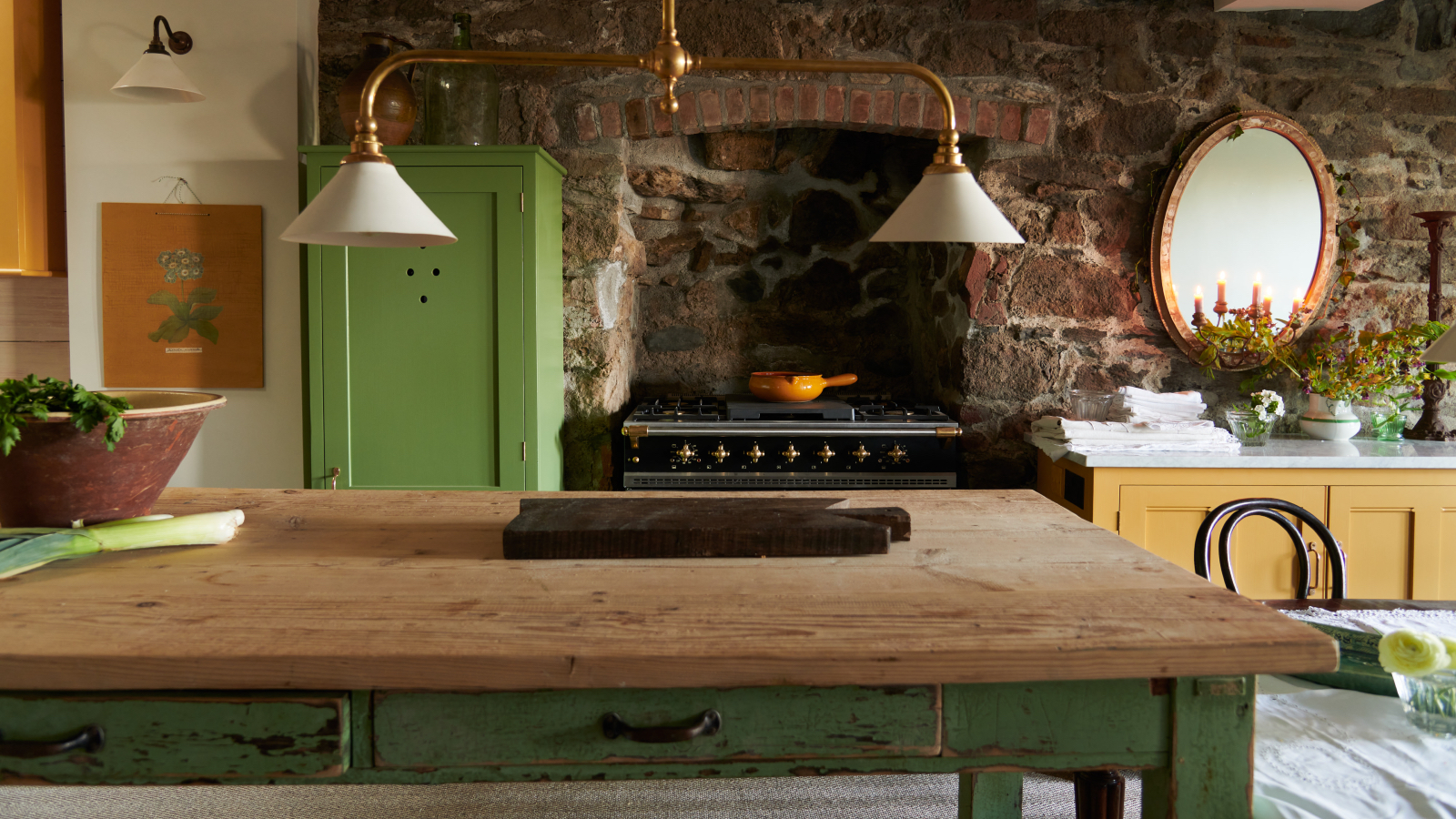 9 things you can clean with glycerin – this cheap and natural cleaner is perfect for indoor and outdoor use
9 things you can clean with glycerin – this cheap and natural cleaner is perfect for indoor and outdoor useFrom patio furniture to silverware, this hydrating and gentle cleaning agent will work miracles
By Ciéra Cree Published
-
 Martha Stewart's houses – inside her most iconic properties, from Cantitoe Corners to Turkey Hill
Martha Stewart's houses – inside her most iconic properties, from Cantitoe Corners to Turkey HillThe lifestyle guru built her legacy around her homes, some of which are the most recognized homes in modern American history – we explore her portfolio
By Megan Slack Published
